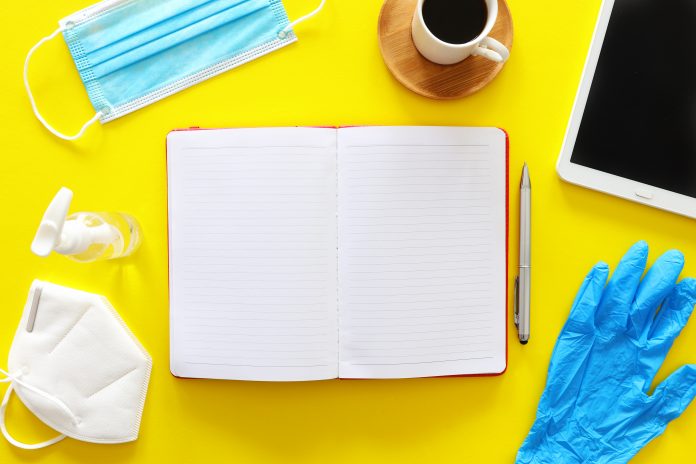Here, some experts discuss how the “new normal” will function when we return to the post-lockdown workplace
Coronavirus will forever change the British workplace. Once it is safe for staff to return to the office, employees should expect it to look completely different from when they last saw it back in March. New technologies, layouts and office etiquettes will be required in order to protect the health and safety of employees and prevent a second wave of COVID-19 infections.
One of the changes may involve re-thinking the traditional 9 to 5 day day. With social distancing expected to continue until a vaccine has been rolled out, some workplaces will experiment with staggered start times and flexible hours to ensure all of their staff are not in the office at once. Furthermore, many workplace traditions of the past may need to come to an end. What will happen to the office tea round in a world where it’s no longer safe to touch each other’s cutlery? And will company catch-ups continue to be done via video conferencing?
To fully understand what the workplace might look like post-lockdown, employers, futurologists and HR experts have provided some expertise to prepare employees for what to expect from the offices of the not-so-distant future.
Workplaces will require hygiene policies and experts
Workplace hygiene will be of the utmost importance once employees start going back to the office. Businesses may soon face legal, insurance and health and safety backlashes if excellent hygiene is not maintained. This means that a company’s senior management will need to implement strict policies around this area. They should already be considering what their strategy will be, how this will be enforced and accumulating supplies to facilitate this.
Gillian McAteer, the Head of Employment Law at Citation, says: “It is not just the HR department’s job to oversee workplace hygiene; workplace hygiene needs to be owned by all levels of management, because what goes on at ground level on a day-to-day basis will make the difference.
“Businesses should decide the behaviours expected from employees, ensure this is communicated to all members of staff and provide training on what is required. Managers should also receive training on how to handle instances where these standards are not being met – from identifying where further training may be required through to formal disciplinary action.”
New technologies will start to appear
One thing that we are certain about is that offices will need to make the most of some new technologies that will make the workplace safer, cleaner and smarter. Some of these will be simple technologies, such as those which allow doors to open via bluetooth to avoid physical contact. Others may be more sophisticated, however, like thermal imaging technology that will identify elevated body temperatures to minimise the risk of infected staff entering the workplace. This is in addition to things like touch free hand sanitisers that will inevitably begin to pop up around bathrooms, kitchens and break rooms.
Futurologist Dr. Ian Pearson told Citation: “There is face recognition which can recognise people, look up their personal records and decide what their risk is. You can assign risk factors using face recognition. Basic AI can also advise on risk assessments. Image recognition can also pick up whether someone has a temperature by looking into the corners of their eyes, which gives away your temperature quite accurately. Some companies are doing that sort of stuff too.”
Meetings will never be the same
Cramped conference rooms will surely be a thing of the past when staff return to their workplaces post-lockdown. Offering little opportunity for social distancing, these rooms will likely be repurposed as extra office space for seating and equipment. Experts predict that most meetings will instead continue to take place over audio and video in much the same way they have been throughout the coronavirus pandemic.
Go To Meeting explained: “Meeting rooms of the past were generally comprised of many people physically in the space, with one or two people joining remotely or from other offices. This model is now being turned upside down: only a few people will be in the office conference rooms, with the majority joining remotely.”
So keep your creative Zoom backgrounds saved; you will still be using them for the foreseeable future. All that may remain is a single meeting space may remain for confidential conversations you wouldn’t want the rest of your office to overhear.
Office layouts will become more flexible
Steelcase says: “When businesses begin to ramp up, they will be looking to bring 75-100% of their employees back to the office. In order to accommodate this along with distancing guidelines, workplaces will start to design for disinfecting, adopt flexible furniture and power that can be easily reconfigured, and introduce standing meetings that can take place in open areas.”
This suggests that offices will never quite look the same as they once did. Chairs and desks will be replaced by those with fabrics or surfaces that are easy to disinfect, for instance. Meanwhile, the layout of workplaces, particularly open plan ones, will need to become more flexible to allow for safe social distancing. Workspaces won’t be static in the way they once were; they’ll be able to adapt depending on the volume of staff in the office.











